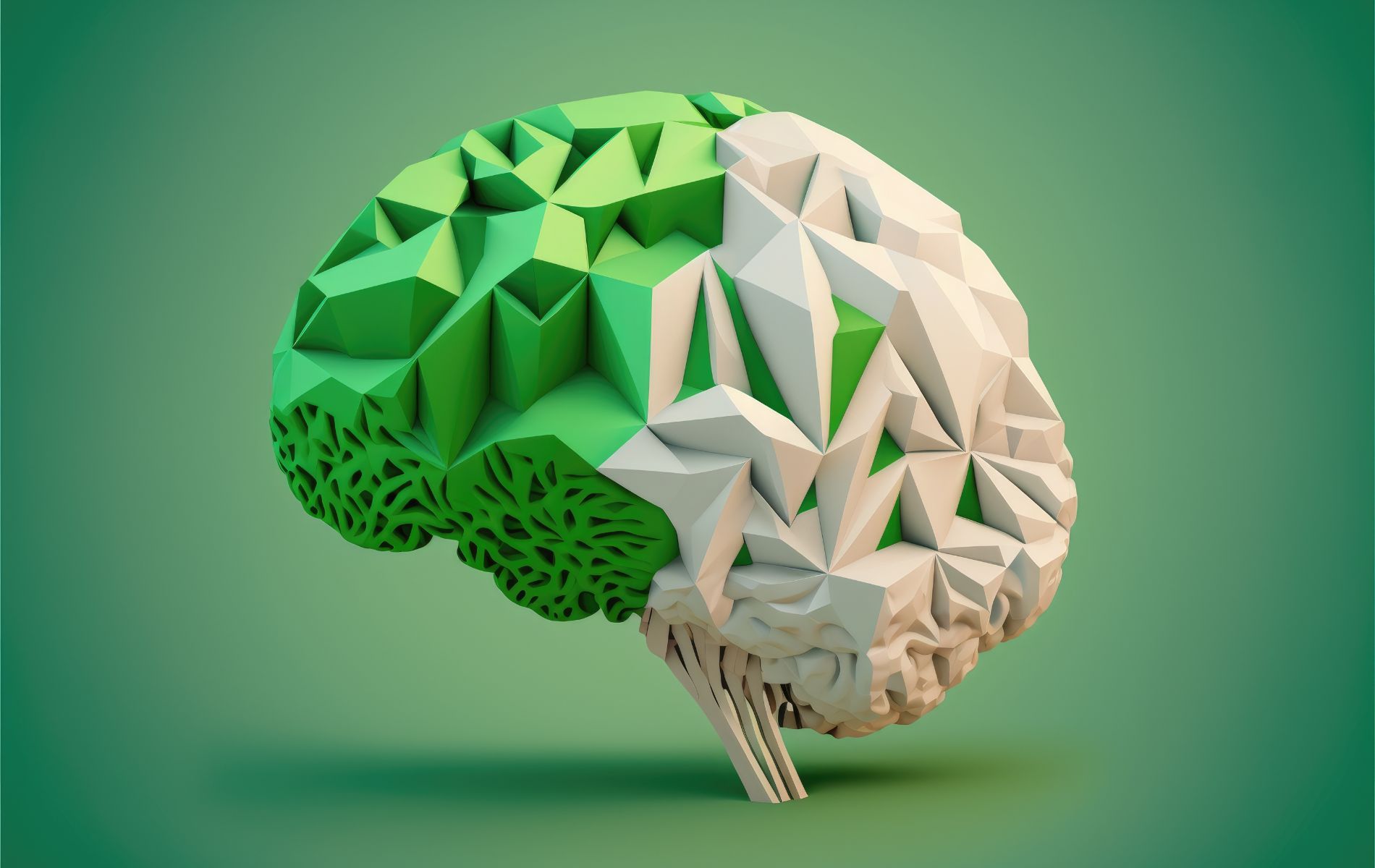Keywords: TBI, chronic traumatic encephalopathy
Introduction
Traumatic brain injury (TBI) represents one of the most severe injuries in terms of both fatality and long-term implications for those who survive [1]. It is usually divided into mild, moderate, and severe, based on the Glasgow Coma Scale (GCS) [2, 3].
There are many possible complications after a TBI, but chronic traumatic encephalopathy (CTE) remains one of the most severe due to its long-lasting effects and evolution [4]. CTE represents a neurodegenerative condition that is characterized by the presence of hyperphosphorylated tau deposits all over the brain, mostly presenting as neurofibrillary tangles (NFTs), threadlike neuropil neurites (NNs), and astrocyte tangles [5].
Based on a neuropathology post-mortem exam, studies showed that there is a higher risk for CTE after suffering repetitive brain trauma during military service and contact sports. Even so, there is still uncertainty as to whether a single blow to the head is sufficient to start the neuropathological cascade or whether there are several necessary hits to the head before the process is started [5]. It is clear that brain trauma is a risk factor necessary to develop CTE, but it is not sufficient evidence because not all patients with a history of TBI develop this disease during their lifetime.
For many years, it was suspected that repeated TBI might lead to neurodegenerative disease. In literature, there are mentions of a disease that affects individuals later in life, after suffering repeated head injuries, that influence their cognition and behavior dating from the 1920s. In 1928, Martland claimed that he observed a similar disease in boxers after repeated blows to the head, using the term “punch drunk” to describe it [6]. Later on, Millspaugh was the one who introduced the term “dementia pugilistica” in his paper from 1937 [7]. It was even later determined that this disease was neuropathologically distinct from any other neurodegenerative disease. Its features included those presented in Figure 1 [8].
Corsellis et al. advanced even further with their research and described three stages of the disease:
- the first one included emotional disturbances
- the second one with memory problems and Parkinson’s disease debut
- the third one with a global cognitive decline and progress to dementia, problems with gait and speech, and full-blown Parkinson’s disease [8].
The term CTE was introduced at the beginning of the 20th century, and it represents nowadays the widely used terminology to describe the disease. In recent years, additional evidence appeared that suggested that athletes outside of boxing and even non-athletes with a history of repeated brain injuries/trauma may develop CTE during their lifetime [5].
By the beginning of the 21st century, CTE’s consequences, both macroscopic and microscopic neuropathological features were known, as well as the clinical symptoms (mood alterations, behavioral dysfunction, cognitive dysfunction going up to dementia, motor deficits) [5]. An important number of studies are focusing nowadays on the role of repeated injuries to the head in individuals who are in the military, practicing contact sports, or other activities that might expose a risk for RBTs. The Boston University Centre for the Study of Traumatic Encephalopathy (BU CSTE) is one of these research groups [5].
The formation of CSTE
The Sports Legacy Institute (SLI) was formed in 2007 as a result of the growing evidence of neurological consequences of sports-related brain trauma. Its purpose was to increase education, raise public awareness, and develop an effective public policy to support research regarding CTE and other possible long-term consequences of RBT. A year later, it affiliated with the Boston University School of Medicine (BUSM) and formed CSTE. This multi-disciplinary research initiative aimed to study the long-term effects of RBT, exploring the possible clinical presentation, neuropathology, associated risk factors, and biomarkers of CTE [5].
Initial publication
The first publication from the CSTE appeared in 2009. It reviewed 47 cases of confirmed CTE in the literature and introduced three new ones. It specified that the majority of patients were boxers (85%) five football players, one soccer player, and one wrestler.

The publication aimed to provide a wider neuropathological and clinical description of CTE [9]. It specified that the most common symptoms appeared around the age of 40 and implied cognitive deficits, behavioral dysfunctions, and personality changes. These and other symptoms are presented in Figure 2.
It is that these deficits appeared insidiously, progressing slowly but concluded irreversibly for a long time after the athlete retired from playing sports [9]. The pathology section of the research confirmed the initial findings regarding the reduction in brain weight, with atrophy of the temporal, frontal, and parietal lobes and, rarely, the occipital lobe. With the progression of the disease, the atrophy could spread to the amygdala, hippocampus, and entorhinal cortex. The microscopic examination showed many common features with other neurodegenerative diseases such as Alzheimer’s disease, Parkinson’s disease, and amyotrophic lateral sclerosis.
It found extensive p-tau NFTs, astrocytic tangles, and NNs. McKee et al. showed that the distribution of tau deposits in the brain was unique for CTE in contrast to Alzheimer’s disease and other tauopathies and involved mostly an irregular distribution in the temporal and frontal cortices, mostly in the superficial layers of the cortex, and a preference for the perivascular space was present. As the disease progressed, in more severe cases of CTE, tau immunoreactive deposits were found in the diencephalon, brainstem, subcortical white matter, and paralimbic and limbic regions.
In contrast to Alzheimer’s disease, CTE brains showed fewer beta-amyloid deposits. This was considered to be a unique description and characterization of CTE and helped a lot in diagnosing cases [9].
Motor neuron disease and TDP-43
Previous research recognized brain trauma as an important risk factor for developing ALS, a debilitating motor neuron disease. Its pathological features include motor neuron loss, transactive response DNA binding protein 43kDa (TDP-43), ubiquitin inclusion bodies, and cerebrospinal tract degeneration [5]. One previous study found TDP-43 to be present also in CTE patients but less frequent than in ALS [10].
McKee et al. published a study in 2010 that elaborated on the relationship that is between RBT history and the development of some motor disturbances by examining 12 cases of sporadic ALS, 12 controls, and 12 cases of CTE. In addition to the p-tau deposits that are characteristic of CTE, 10 of the 12 cases of CTE had widespread TDP-43-positive ring-shaped neurites (RNs), ring-shaped glial inclusions (RGIs), filamentous neuronal inclusions (FNIs) in the temporal, frontal and insular cortices, diencephalon, brainstem, basal ganglia, medial temporal lobe, and subcortical white matter.
From the CTE patients with TDP-43 inclusions, 3 cases also presented TDP-43 proteinopathy in the motor cortex and anterior horn of the spinal cord, loss of anterior horn cells, corticospinal tract degeneration, and ventral root atrophy [5]. All three cases developed a motor neuron disease similar to ALS with muscular atrophy and weakness, fasciculations, spasticity, and in 2 cases, even respiratory insufficiency at the end of life. The symptoms usually began with bilateral deficits in the arms, shoulders, and neck and expanded, resulting in the death of the patient in 2-3 years after the initial presentation. These findings suggest that both CTE and ALS originate from a common stimulus, such as RBT [5].
TDP-43 is considered to be a response of the cytoskeleton in the neurons to head trauma. This study provided one of the first significant neuropathological evidence that contact sports and RBT may be associated with the development of a motor neuron disease such as ALS [5].
Pathological staging criteria
McKee et al. published in 2014 the largest case series study regarding CTE. They presented the first detailed pathological staging criteria for the disease. Four stages were introduced [11]:
- Stage I CTE – the mildest form of them all is characterized by a perivascular distribution of astrocytic tangles and p-tau NFTs that are most often located in the sulcal depths in the superolateral, superior, and inferior frontal cortices. They are small deposits usually found throughout the cortex in small foci.
- Stage II CTE – in this stage, p-tau NFTs can also be found in the superficial layers of the cortex. Additional symptoms may appear, such as increased explosiveness, mood swings, depression, and short-term memory loss may be present.
- Stage III CTE – in this stage, significant gross neuropathological changes can be found varying from septal abnormalities, septal absence or septal perforations, cavum septum), mild cerebral atrophy, depigmentation of substantia nigra and locus coeruleus, lateral and third ventricles dilation to atrophy of the thalamus and mammillary bodies. P-tau deposits can be found in the temporal, septal, frontal, insular, and parietal cortices along with the entorhinal cortex, hippocampus, nucleus basalis of Meynert, amygdala, diencephalon, brainstem, locus coeruleus, and spinal cord. In subcortical white matter, the axonal loss is present. Additional symptoms can appear, such as general cognitive impairment, depression, executive dysfunction, and visuospatial abnormalities.
- Stage IV CTE – further cerebral atrophy can be found in this stage, as well as atrophy of the thalamus, medial and temporal lobe, hypothalamus, and mammillary bodies. Axonal degeneration can be found in the white matter of the brain, and neuronal loss in the cortex. Severe p-tau pathology is typically found in the diencephalon, basal ganglia, cerebrum, spinal cord, and brain stem. Regarding the symptoms present, these patients may have dementia, paranoia, depression, aggression, impulsivity, and visuospatial symptoms.
The current research found TDP-43 immunoreactivity in most cases, with sparse deposits in stages I-III located in the medial temporal lobe, cortex, and brainstem more widespread in stage IV in all cortical layers, and more rarely in the hippocampus and spinal cord. All the data from this case series supports the fact that CTE represents a neurodegenerative disease with a predictable progression of p-tau deposits in the brain in conjunction with axonal loss [5].
CTE in military veterans
Besides athletes, military members are also at risk for RBT due to the danger and weapons they are exposed to. Therefore, both McKee and Goldstein studied this pathology and tried to find if there are any differences in lesions encountered in athletes vs. military veterans.
Goldstein et al. even developed a mouse model to simulate the single blast injury type that military personnel are exposed to nowadays. This will allow further developments and understanding of the pathology mechanisms of CTE [12].
Clinical research
Multiple long-term clinical studies were developed to better explain and understand CTE, including the Longitudinal Examination to Gather Evidence of Neurodegenerative Disease (LEGEND) study. This was a prospective, longitudinal study that involved online surveys and telephone interviews of more than 700 athletes with or without RBT history. Moreover, it can track potentially susceptible individuals to CTE using various behavioral and cognitive measures that may help define the disease’s presentation and course [5].
Stern et al., in the Diagnosing and Studying Traumatic Encephalopathy Using Clinical Tests (DETECT) study, tried to develop objective biomarkers that described the clinical features of CTE by comparing an at-risk population regarding RBT (professional American football players) with control athletes with low exposure to RBT [13].
Traumatic Encephalopathy Syndrome (TES)
A complete picture regarding CTE clinical presentation was tried to be obtained recently, based on the neurobehavioral syndrome that occurs with RBT.
(TES) was introduced to distinguish these symptoms from those regarding CTE pathology. For the diagnosis of this syndrome, it is important that no other neurological disorder can be found that may account for those symptoms. TES was thought to present four potential variants, as presented in Figure 3 [5].

Conclusions and Future Directions
CTE remains one of the important pathologies for the scientific community. Therefore, studies are underway to better understand it and its long-term consequences, improve the diagnosis and treatment and better distinguish it from other similar neurodegenerative disorders.
Future research is hoped to bring more light to the mechanisms of this disease and risk factors and bring effective prevention measures and treatment interventions.
For more information about the impact of TBI visit:
- Immune response post-TBI
- How does TBI affect the functions of patients?
- Advances in TBI care and therapies
We kindly invite you to browse our Interview category https://brain-amn.org/category/interviews/. You will surely find a cluster of informative discussions with different specialists in the field of neurotrauma.
Bibliography
- Brazinova A et al., Epidemiology of Traumatic Brain Injury in Europe: A Living Systematic Review’, J. Neurotrauma 2021, doi: 10.1089/neu.2015.4126.
- Hellawell DJ, Taylor RT, and Pentland B. Cognitive and psychosocial outcome following moderate or severe traumatic brain injury. Brain Inj. 1999, doi: 10.1080/026990599121403.
- Teasdale G and Jennett B. Assessment of coma and impaired consciousness. A practical scale. Lancet Lond. Engl. 1974, doi: 10.1016/s0140-6736(74)91639-0.
- Gavett BE, Stern RA, and McKee AC. Chronic traumatic encephalopathy: a potential late effect of sport-related concussive and subconcussive head trauma. Clin. Sports Med. 2011, doi: 10.1016/j.csm.2010.09.007.
- Riley DO, Robbins CA, Cantu RC, and Stern RA. Chronic traumatic encephalopathy: contributions from the Boston University Center for the Study of Traumatic Encephalopathy. Brain Inj 2015, doi: 10.3109/02699052.2014.965215.
- ‘PUNCH DRUNK | JAMA | JAMA Network’. https://jamanetwork.com/journals/jama/article-abstract/260461 (accessed Dec. 12, 2022).
- Changa AR, Vietrogoski RA, and Carmel PW. Dr Harrison Martland and the history of punch drunk syndrome. Brain. 2018, doi: 10.1093/brain/awx349.
- Corsellis JA, Bruton CJ, and Freeman-Browne D, ‘The aftermath of boxing’, Psychol. Med. 1973, doi: 10.1017/s0033291700049588.
- McKee AC et al. Chronic Traumatic Encephalopathy in Athletes: Progressive Tauopathy After Repetitive Head Injury. J. Neuropathol. Exp. Neurol. 2009, doi: 10.1097/NEN.0b013e3181a9d503.
- King A, Sweeney F, Bodi I, Troakes C, et al. Abnormal TDP-43 expression is identified in the neocortex in cases of dementia pugilistica, but is mainly confined to the limbic system when identified in high and moderate stages of Alzheimer’s disease. Neuropathol. Off. J. Jpn. Soc. Neuropathol. 2010, doi: 10.1111/j.1440-1789.2009.01085.x.
- McKee ACet al. The spectrum of disease in chronic traumatic encephalopathy. Brain 2013, doi: 10.1093/brain/aws307.
- Nelson TJ et al. Close proximity blast injury patterns from improvised explosive devices in Iraq: a report of 18 cases’, J. Trauma 2008, doi: 10.1097/01.ta.0000196010.50246.9a.
- Stern RA, Riley DO, Daneshvar DH, Nowinski CJ, et al. Long-term Consequences of Repetitive Brain Trauma: Chronic Traumatic Encephalopathy. PM&R 2011, doi: 10.1016/j.pmrj.2011.08.008.





